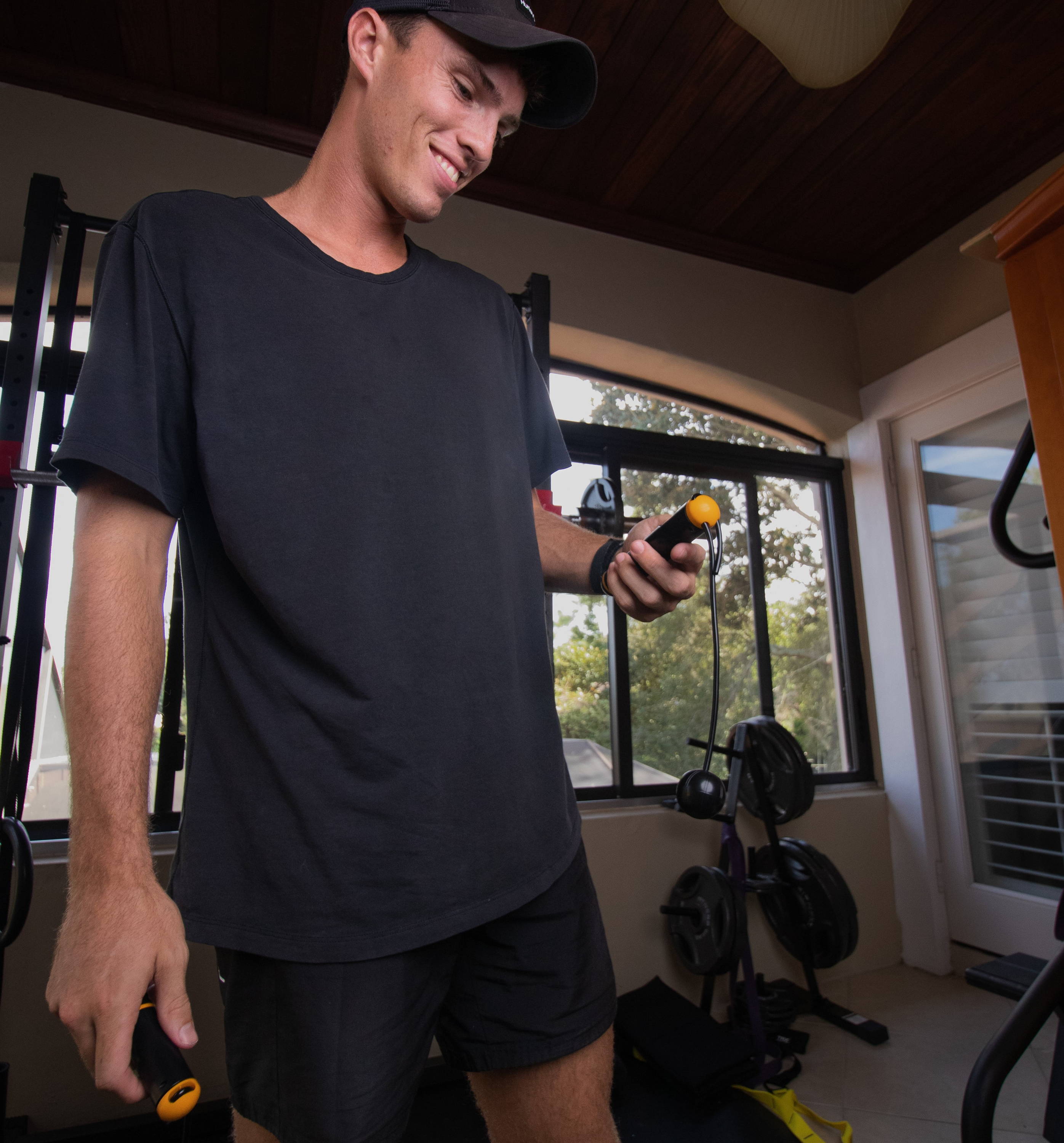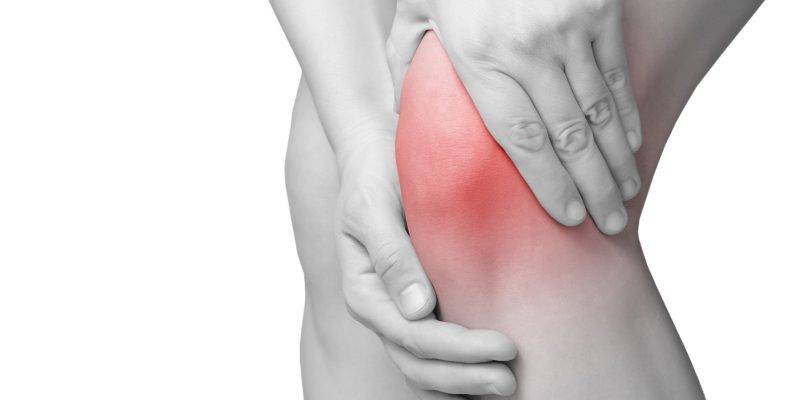JUMPTRAINER BLOG

HOW TO AVOID JUMPING INJURIES
Today, we will explore common jump rope injuries, their causes, and most importantly, the preventive measures you can take to minimize the risk of these injuries!

AVOIDing JUMPING INJURIES
Hi JumpTrainer Community, this is Eirik (one of the Co-Founders of JumpTrainer) writing to you today!
Today's blog is focused on maximizing your JumpTrainer experience while minimizing the risk of injuries. Although I'm not a medical professional, I'm here to share valuable insights and practical tips that can help you stay safe and informed during your JumpTrainer journey.
Jumping is not only a fantastic form of exercise but also an enjoyable way to stay fit and healthy. However, like any physical activity, there are potential risks involved. That's why it's crucial to equip ourselves with knowledge and strategies to prevent common injuries and promote a sustainable JumpTrainer practice.
Throughout this blog, we'll explore key aspects such as warm-up techniques, proper form, surface selection, footwear choices, avoiding overtraining, and the importance of rest and recovery. By implementing these tips, you'll be able to jump with confidence, knowing that you're taking proactive measures to protect your body.
Remember, I'm here to provide guidance and share insights based on my experience and science, but it's always important to consult with healthcare professionals or sports medicine specialists for personalized advice, especially if you have any existing medical conditions or concerns.
Now, let's dive into the first half of our blog, where we'll explore common jumping injuries and their prevention strategies. By understanding the risks and implementing preventive measures, we can ensure a safe and rewarding JumpTrainer experience.
Let's get started!

understanding the difference between "muscle Soreness" & acute injury or pain
Before we dive into the common injuries, it's important to know that when you engage in exercise or physical activity that your muscles are not accustomed to (such as jumping), it can lead to microscopic tears in the muscle fibers. These tears trigger an inflammatory response as the body initiates the repair process.
Muscle soreness, also known as delayed onset muscle soreness (DOMS), occurs as a result of microscopic damage to muscle fibers during exercise or physical activity. There are two main types of muscle soreness:
Acute Muscle Soreness:
This type of soreness is typically felt during or immediately after intense exercise. It is caused by the buildup of lactic acid, a byproduct of energy production in the muscles, and is often described as a burning sensation or fatigue.
Delayed Onset Muscle Soreness (DOMS):
DOMS usually sets in 24 to 48 hours after exercise and is more commonly experienced when starting a new exercise program, increasing the intensity or duration of workouts, or engaging in eccentric exercises (where muscles lengthen under tension). The exact cause of DOMS is still not fully understood, but it is believed to be a result of microscopic damage to muscle fibers and the subsequent inflammation and repair processes that follow.
Inflammation causes the release of chemicals that stimulate nerve endings, resulting in the sensation of pain or soreness.
It's important to note that while muscle soreness can be uncomfortable, it is a normal and temporary response to exercise. It is an indication that your muscles are adapting and becoming stronger. With regular exercise, your muscles will gradually adapt, and the severity and duration of muscle soreness will decrease over time.
So, remember, muscle soreness is a natural part of the exercise process, and it should not be confused with acute injury or pain.
If you experience persistent or severe pain, it is advisable to consult a healthcare professional for further evaluation and guidance.

common Jumping Injuries
Shin Splints - Pesky pain that runs along your shin bone
Calf Strain - Feeling of tightness, tenderness, or weakness in the calf area
Ankle Pain - Various causes like fractures, nerve compression, or instability
Knee Pain - Inflammation and deterioration of the patella tendon as the quadriceps muscles tug down on the kneecap
Plantar Fasciitis - Stabbing pain in your heel as you rise
exploring the common jumping injuries
Shin Splints: The Nagging Pain Along Your Shinbone
When it comes to common injuries, shin splints take the spotlight. You know, that pesky pain that runs along your shin bone (officially known as the tibia). It brings tenderness, soreness, and even mild swelling to your lower leg. Neglecting this issue can lead to chronic discomfort, and if left untreated, it may escalate to a stress reaction or even a fracture.
Tips for prevention:
This includes: Proper Warm-up, gradually increasing the intensity of the workout, proper footwear, surface selection, correct technique, strengthening lower leg muscles, ice and rest - SEEKING PROFESSIONAL HELP!
Calf Strain: When Your Calf Muscle Rebels
Picture this: athletes of all kinds dealing with the dreaded calf strain. Often resulting from sudden movements or intense physical activity without a proper warm-up, this injury can really cramp your style. And if you're an avid rope jumper, beware! The quick and forceful leg movements involved in jumping rope can stretch your calf muscles beyond their limits if they're not adequately prepared. So, don't be surprised if you experience calf pain, swelling, or a noticeable decrease in your range of motion.
Tips for prevention:
To prevent calf strains, it's essential to warm up properly and avoid sudden, intense movements without proper preparation.
Ankle Pain: The Achilles' Heel for Athletes
Ankle pain is no stranger to most athletes. It can stem from various causes like fractures, nerve compression, or instability. Similar to the calf strain we discussed earlier, general ankle pain (excluding specific injuries like ankle sprains) often arises from inadequate warm-ups. Wearing improper footwear—think high heels or shoes with proper arch support—and engaging in activities like jumping or exercising on hard surfaces can also take a toll on your ankles.
Suggestions for reducing the risk:
To reduce the risk, prioritize warming up effectively, wearing suitable shoes with proper arch support, and jumping on softer surfaces whenever possible.
Knee Pain: When Your Knees Cry for Help
Here's a familiar culprit among athletes—general knee pain, famously known as "jumper's knee." Excessive jumping and running are the primary culprits here, worsened by poor form during these movements. The end result? Inflammation and deterioration of the patella tendon as the quadriceps muscles tug down on the kneecap. It's what we call an "overuse" injury. To effectively treat jumper's knee, two key steps are crucial: 1) giving your knees a well-deserved rest and 2) strengthening your quadriceps and hip flexors. As for jumping rope enthusiasts, practicing proper mechanics and avoiding excessive jump height can help prevent this condition.
Tips for prevention:
Preventing jumper's knee involves rest and strengthening the quadriceps and hip flexors while maintaining proper jumping mechanics.
Plantar Fasciitis: When Heel Pain Takes a Stab at You
If you've ever experienced a stabbing pain in your heel as you rise from bed in the morning, chances are you've encountered plantar fasciitis. This notorious heel pain results from inflammation of the band of tissue connecting your toes to your heel bone along the bottom of your foot. Among the injuries we've discussed so far, this one might be the most disruptive to your daily life. Stepping becomes an ordeal, with the pain gradually easing as the day progresses, only to return with a vengeance in the morning.
Tips for prevention:
Stretching the bottom of the foot, jumping on padded surfaces, and using proper footwear are effective preventive measures.
While factors like walking mechanics and bone structure can contribute to the onset of plantar fasciitis, those of you jumping rope need to be mindful too. Jumping excessively, especially if you're new to the activity, and wearing improper footwear can also play a role. To alleviate the discomfort, consider stretching the bottom of your foot using a rolling pin or tennis ball. Jumping on a padded surface and indulging in Epsom salt soaks may provide some relief as well.
Remember, knowing about these common injuries and their causes is the first step toward prevention and effective treatment. Take care of your body, warm up properly, and pay attention to your form to keep these pesky issues at bay.

the solutions
Learn the Basics - Discover the Fundamentals of Jumping
Master Jump Height - Mind Your Jump Height
Warm-Up Effectively - Prepare Your Body for the Workout
Surface Selection - Minimize the Impact of Jumping
Step into the Right Shoes - Withstand the Repetitive Nature of Jumping
Avoid Overtraining - Exploring Your Limits
Stretch, Rest & Recover - The Crucial Components of Self-Care
Embrace the Fun - Find Joy in Your JumpTrainer Journey
how to prevent common injuries
Learn the basics:
This might be an obvious tip, but learning the basics of how to jump can aid in reducing your chances of getting of having to deal with some of the most common jumping injuries. Foundational elements like proper posture (shoulders retracted, core and glutes engaged, eyes forward) as well as learning how to warm up, hold your JumpTrainer, and even how to correctly move your feet and hands while jumping are all things that will set you on the right path to jumping safely!
Mind Your Jump Height:
Believe it or not, jumping too high is a major cause of injuries. It may sound counterintuitive, but you really only need to clear an inch or two off the ground for a proper jump. Any higher and your low-impact JumpTrainer session turns into a high-impact one. Consistently jumping too high is a surefire way to invite issues like shin splints or knee pain.
Warm-Up Wisely:
Never underestimate the power of a warm-up—it's a crucial component of any exercise routine, and jumping is no exception. A proper warm-up allows your muscles and tissues to prepare for the workout ahead, reducing the risk of injury, especially during jumping and plyometric movements. Dynamic exercises work wonders in priming your body, so incorporating moves like butt kicks, high knees, jumping jacks, and even inchworms into your JumpTrainer program is a smart move.
Surface Selection Matters:
Surprising as it may be, the surface you jump on can make a world of difference in avoiding common jumping injuries. Unyielding surfaces like concrete or asphalt are far less forgiving than softer ones like foam matting or padded gym floors. While you may not always have the luxury of choosing your workout spot, whenever possible, opt for a softer area to minimize the risk of injury. Alternatively, jump rope mats can be a handy investment for this very purpose.
Step into the Right Shoes:
Just like with any other fitness activity, wearing proper footwear is crucial when jumping. Opt for shoes that provide solid arch support and ankle stability—they'll be your best friend as you embark on your JumpTrainer journey. Finding footwear that can withstand the repetitive nature of jumping is essential for injury prevention.
Avoid Overtraining:
Sure, some muscle soreness is to be expected when engaging in new exercises, but don't fall into the "no pain, no gain" trap often peddled by the fitness industry. We understand your eagerness to jump, perfect your swing mechanics, and transform your body, but remember to know your limits. Pushing yourself too hard too soon can lead to injuries. If you're new to JumpTrainer, take it slow, focus on mastering the fundamentals, and gradually increase the intensity.
Stretch, Rest & Recover:
Injuries can do more than just hinder your exercise performance—they can have a significant impact on your overall well-being, even at worst-case scenarios leading to conditions like depression. Keep in mind that rest and recovery are crucial components of self-care. Even though JumpTrainer gradually increases the jumps daily to minimize maximum effort - allow yourself a day off here and there or dedicate some time to active recovery through stretching and mobility exercises. This way, your body can repair and rebuild muscles while minimizing the risk of future injuries.
Embrace the Fun:
Last but not least, jumping is not just an incredible form of physical fitness; it's also downright enjoyable! Here at JumpTrainer, fitness is a lifestyle we embrace wholeheartedly. We believe in having fun during our workouts and infusing that joy into all aspects of our lives—personal, professional, and beyond. Approaching JumpTrainer with the intention to have fun is a fantastic strategy to keep yourself injury-free and lead a fulfilled life overall. This mentality will keep you present, encourage you to take it at your own pace, and help you find joy in every facet of your life.

Thank you all for joining me today on this insightful journey into maximizing your JumpTrainer experience while prioritizing injury prevention. I hope you found this blog valuable and that the tips and strategies shared will support you in your jumping endeavors.
Remember, staying safe and injury-free is key to maintaining a consistent and enjoyable JumpTrainer practice. By implementing the preventive measures discussed today, you're taking proactive steps towards long-term success.
If you have any further questions or need additional guidance, our dedicated team is here to support you. Feel free to reach out to us via our Website, Social Media Channels, or the Private Facebook Community.
Keep jumping, keep pushing your limits, and most importantly, keep having fun! Let's continue to inspire and motivate each other on this incredible JumpTrainer journey.
Stay fit, stay healthy, and let's jump higher together!
#JumpTrainerCommunity #InjuryPrevention #JumpRopeJourney

